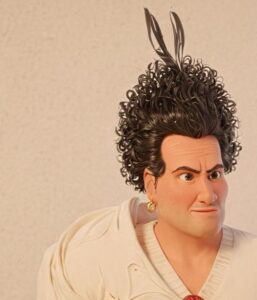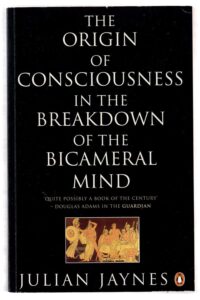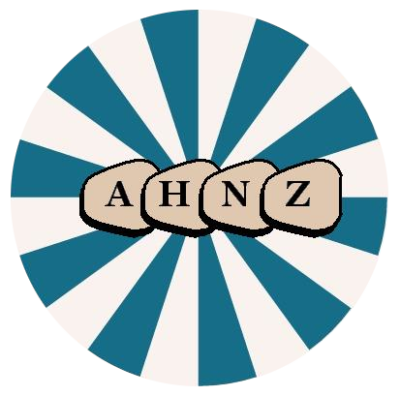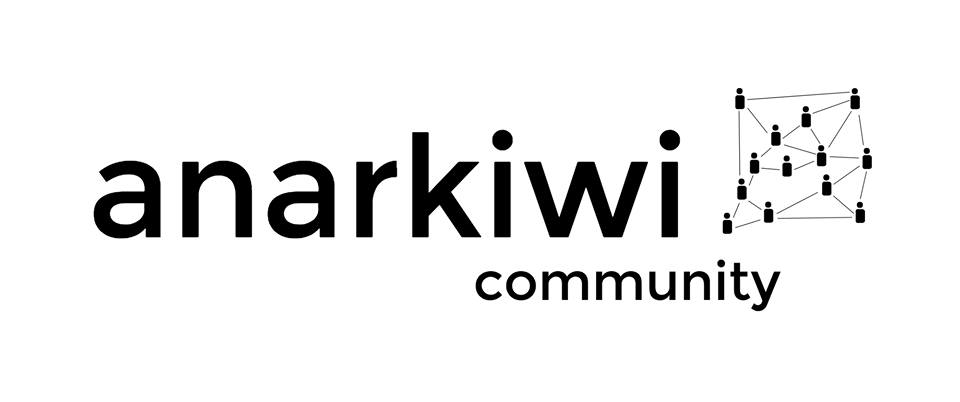1809: Te Pahi’s Rebuke
April 2, 2025
By AHNZ
 Te Pahi, a Ngapuhi Chief has a fairly good reputation in early relations between the colony of New South Wales and New Zealand. He had been an honored guest in Governor Philip King’s house in Sydney over 3 months. His son, Matara, visited England in 1809 and met King George III. Samuel Marsden’s mission also established close ties and gifted the tribe capital goods including a prefabricated house. These diplomatic relations might have changed the course of New Zealand history decades before the Declaration of Independence (1835) or the Proclamations of Sovereignty (1840.) It is giddying to think how how many lives, how much slaughter averted, how much heritage and history might have been saved from the scourge of the Musket Wars had this relationship not gone tragically wrong.
Te Pahi, a Ngapuhi Chief has a fairly good reputation in early relations between the colony of New South Wales and New Zealand. He had been an honored guest in Governor Philip King’s house in Sydney over 3 months. His son, Matara, visited England in 1809 and met King George III. Samuel Marsden’s mission also established close ties and gifted the tribe capital goods including a prefabricated house. These diplomatic relations might have changed the course of New Zealand history decades before the Declaration of Independence (1835) or the Proclamations of Sovereignty (1840.) It is giddying to think how how many lives, how much slaughter averted, how much heritage and history might have been saved from the scourge of the Musket Wars had this relationship not gone tragically wrong.
The famous massacre and burning of The Boyd in 1809 by a rival tribe to Te Pahi’s was blamed on him! A team of avengers assembled and sailed to Te Pahi’s island stronghold, overcame it, and slaughtered his people and took back the friendship gifts. Only later in the year was it recognised that Te Pahi well and truly had been set up by his Maori enemies who were the true culprits. Ref. 1806: Te Pahi’s Medal, AHNZ
As Kiwi Codger pointed out in a recent comment to AHNZ, Te Pahi was not entirely blameless. The Boyd attack was not him but the attempt on the City of Edinburgh during 1809 was. This was an all-out amphibious assault on that trade ship which simply seemed to be the next in the sequence of what had been done to The Boyd. The Edinburgh crew had to fight the tribesmen off, capture and confiscate their war canoes, “…which were restored upon their afterwards making a proper concession for their treachery, and promising never to attempt the capture of that or any other English vessel.” Ref. Sydney Gazette and New South Wales Advertiser (1809.)
Codger wrote “I have always been a great admirer of Te Pahi, and mused what NZ may have been if he had lived. However I may be forced to reconsider the high esteem I have held him in. There’s this newspaper article and one other that has me questioning my hero. He may not be as innocent as history has made him out to be. More digging and critical analysis needed.”
Mainstream history, as per usual, makes Te Pahi out to be a victim by overlooking these other sources. And, that renewed efforts were made to compensate and reconnect with the tribe after the great affray. Such facts get in the way of a Black Lives Matter narrative. However, I would like to do something to save Coger’s hero and restore Te Pahi’s reputation a little bit by adding some more context.
“…City of Edinburgh.—Passenger Mr. Ceronio, who went from hence in the Edinburgh the 26th of last January. From this gentleman we learn, that the Edinburgh underwent a very thorough and complete repair at the Bay of Islands, which was accomplished in the space of three months; during which interval the native princes had attempted to get the vessel into their hands, for the purpose of possessing themselves of the trade put on board her…they proved to be the leaders of the conspiracy to take the ship, which was then keel out, and the crew, being encamped on shore, were in the first instance alarmed at the appearance of above 100 armed men lurking….a chief, named Toopie, gave information of the plot that had been formed against the Europeans; and stated that a number of war canoes were then ready to attack the vessel, which was only delayed until daylight should appear.” – SGNSWA (1909)
VOYAGE: Sydney to New Zealand. Friday, January 27, 1809. ORIGIN: Cockatoo Dockyard, Sydney. Ref. passengers.history.sa.gov.au
“City of Edinburgh was a Spanish vessel, built in France, that a British frigate brought into the Cape of Good Hope in 1807 as a prize. There investors purchased her to trade with the penal colony of Port Jackson….While City of Edinburgh was loading cargo at Bay of Islands, news came through of the Boyd Massacre, a massacre by local Māori of the crew and passengers of the ship Boyd. Pattison and Berry sailed City of Edinburgh to Whangaroa. There they were able to rescue four survivors and regain Boyd’s papers. City of Edinburgh sailed from New Zealand on 26 January 1810,..” – Wiki
“The whalers, too, were inclined to believe in Te Pahi’s guilt; Tara, chief at Kororāreka (Russell), the rival anchorage to that of Te Puna, did his best to convince them. In retaliation, although ostensibly to release any further captives, the crews of five whaling ships took Te Pahi’s island by force on 26 March 1810. About 60 of his people were killed and his houses and property destroyed. Te Pahi, although wounded, escaped. Within weeks, however, he had died from a wound suffered in fighting between his people and those of Whangaroa, caused by the Boyd affair.” – Dictionary of New Zealand Biography (1990)

My opinion is that we cannot hold Te Pahi and his people responsible. Rather, it is the entirety of Classic Maori Culture. If you want to interact and make friends with Maoris of this era then you simply need to accept that wider context that comes along as part of a package deal.
James Ceronio told the newspaper that Edinburgh was “keel out” when it attracted the pillagers. It was under repairs, out of the water, tipped over. The Maoris would have a limited concept of repairing things like ships in the first place. To them a thing is working and alive or broken and dead.
Edinburgh would be perceived as damaged/broken/vulnerable and therefore subject to attack. In a Therapeutic Society we help the unfortunate. But In 1809 it was a Tragic Society where misfortune is a signal from the gods that a person and their property are now prey. It would be about half a century before this orientation in Maori society changed. Ref. 1863: Martin Crossing the Delaware, AHNZ
He writes, “…a great storm of wind and rain, when a large branch broke away, and descending on her crushed her to death. … This dispensation of Providence, according to Maori law, indicates the wrath of heaven against the unfortunate husband; therefore it was only proving themselves good, religious heathens, anxious to keep square with the celestial powers that be, to organise a taua muru to sack his house and belongings whilst he sits by and considers himself the more highly honoured the more thoroughly they destroy everything they can lay hands on. Scarcely was my wife buried, and that with all due solemnity, as became a chief’s daughter, than the mob of plundering friends appeared, and in ve minutes left me without a stick or stitch in the wide world. In an evil hour I had brought my muskets into my whare so that they were a grand prize to the human vultures. I was, therefore, not only destitute, but had not a single commodity to trade, with which to better my position.”
This concept of Plundering Friends doesn’t fit the Western Mind at all. The Harriet Affair (1834,) the Boyd (1809,) and the Plundering of the Herald (1828) were considered great aggravations worthy of violent retaliation. But note that the Herald crew were stripped naked to their skin but not killed like an enemy; They were plundered like a friend. It’s a Tragic Society.
Te Pahi can still be be admired provided we situate him in his own culture rather than our own. We ought not expect him to transcend his identity and fault him for being a broken Westerner. You broke your ship, white folks, so the law of muru stipulates you’re all going down to square one on the great cosmic game of snakes and ladders that is life. To make sure this happens it’s OK for the “friends” to enforce it, or test it, by use of arms. According to Ceronio a chief named Toopie even acted as liaison for the grounded seaman to help them prepare for the cultural exchange they had set in motion. That’s how it was with the Harriet and the Herald too. Potentially even the Burning of the Boyd has been misunderstood muru.
 My Codger correspondent wasn’t having it. All humans are capable of “unchecked greed,” he says and who could help themselves from a ship’s cargo of game-changing technology and wealth within reach on their beach?
My Codger correspondent wasn’t having it. All humans are capable of “unchecked greed,” he says and who could help themselves from a ship’s cargo of game-changing technology and wealth within reach on their beach?
These Classic Maoris didn’t have our modern mind or the free market capitalism that depends upon it. They had what Jean Piaget called the pre-Operational Mind or what Julian Jaynes called the Bicameral Mind. Young, developing, brains do not have a sense of linear time. They cannot regulate themselves or others with recourse to abstracts like “property.” They hear voices as if from a god or an imaginary friend because their consciousness has not been fully integrated.
“It is not until the age of seven or so, Jean Piaget found, that children begin to have a full understanding of time as a continuous flow. Until then, the child is in what Piaget, the great Swiss cognitive psychologist, called the “preoperational stage,” when everything is observed and interpreted from only one point of view, the child’s. “The preoperational child, in his egocentric manner, believes that he can stop time, speed it up, or slow it down.” – Scattered Minds, Gabor Mate (1999)“A Maori never looks at causes, only effects” Ref. Cannibal Jack, Bentley (2010)
William Golding wrote a famous book on the premise of what a bunch of ADHD pre-Operational mind 7yo boys would do if their plane crashed. In Lord of the Flies (1954) those subjects basically failed the marshmallow test and horrors followed. Maori adults found themselves in that same position but with cultural firmware to depend upon which ensured that they would not fail the Marshmellow Test or the Golding test. They would never give in to unchecked greed against their fellows or other tribes without some superstructural rules satisfied.
It would not have been possible for a Maori to have pillaged a ship and gotten away with it. Sure, you could perform some magic (eg eat the eyeballs of your victims) so the victims would not come for you beyond the grave. Or, maybe you could ensure that there were no witnesses. Yet within every Bicameral Mind there is a sort of conscience that sees all. The God within knows what you have done. Your Ancestors are not really dead but watching, perhaps from a shrunken head or perhaps from the stars in the night sky. So, if we accept that about the Classical Maori we cannot do otherwise than say that Te Pahi did not betray his ‘friends’ as much as follow the law of his land. By rebuking these “pillaging friends” and taking control of the situation it might be that the City of Edinburgh had shown the wisdom of James Cook; Proving they were not “tragic” at all and so they didn’t need to be pillaged. Te Pahi may have been quite satisfied with that.
Unfortunately there were not enough leaders like James Cook and his sociological mind on hand nor would there be for a long time to come. Te Pahi was caught between his epistemological commitment to muru and angry armed Westerners who had been weaponised by his enemies using lies. His people were smashed and Te Pahi himself died in conflict against that other tribe that had framed him for murder. By viewing Te Pahi in his proper cultural context we can still recognise him as a sympathetic figure.
—
Image ref. Te Pahi. Based on an original sketch. AI aided. AHNZ (2025)
Ref. Saved from Cannibals by Captain James Ceronio, quirkyscience.com (2016)
Ref. The Sydney Gazette and New South Wales Advertiser, Sun 24 Sep 1809, Trove
2 thoughts on "1809: Te Pahi’s Rebuke"
Leave a Reply
 Like Comment Share
Like Comment Share






Ha! you may be right, glad to see that it got you thinking.
Human nature trumps tikanga everytime. Tikanga is used to keep human nature in check… as with all social systems…it can only do so much.
The 7 deadly sins take a bunch of restraining 🙂
At your service. I see you still think those elemental human drives are the primary. Whereas, I think humans are situated in social space before that. For example, ‘point the bone’ and people will die even when their human drive says “live.” Or, some would sooner die that eat the tabooed food that might have saved them. “Death before dishonor.” How else to explain Sati in old India?
I’m sure about that. The more interesting question is: Which social system tests higher for marshmallow deferral?